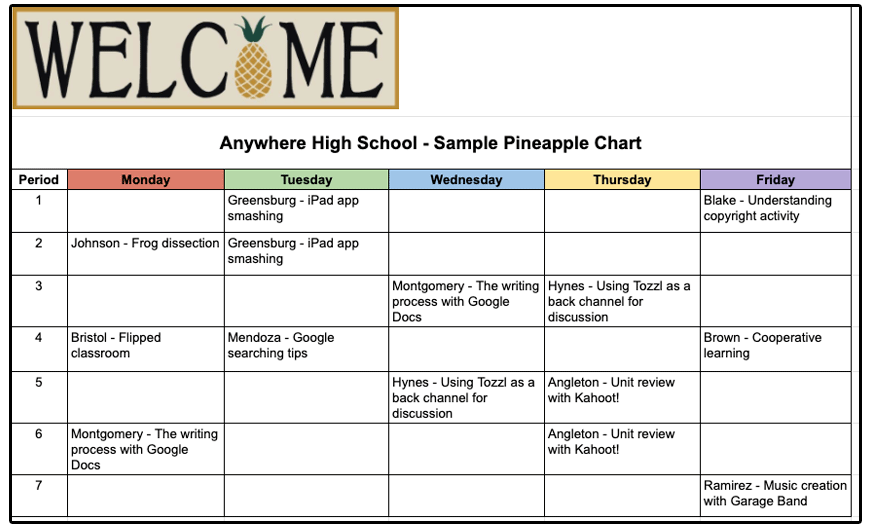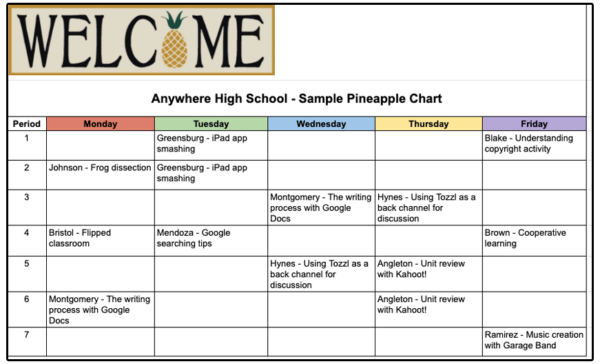This post was originally published October 30, 2015. It was updated with new information on February 26, 2021.
Pineapple charts can help educators from missing the amazing things that are happening every day in classrooms. You may not be aware of what your colleagues are doing because you are so busy with your own students. Mark Barnes and Jennifer Gonzalez, authors of Hacking Education: 10 Quick Fixes for Every School, use pineapple charts as a brilliant and easy solution.
What is a Pineapple Chart?
If you have a lesson planned that you believe other teachers might be interested in, whether it’s for a particular teaching technique you’ll be using, a new tool, or a powerful way to differentiate learning, you post that information in the faculty workroom (or anywhere teachers gather) on a pineapple chart. The chart is based on the idea of a pineapple as a symbol of welcome and includes all the days of the week and each period of the day. You post your interesting lesson on the chart on the specific day and time when you’ll be teaching it and thus invite your colleagues in to watch you in action. Here’s a sample.
If, for example, you were going to use Kahoot! as a review tool in your third-period U. S. History class, you would put that on the chart. Or if you were going to have your ESL students discuss the theme of solitude using the Fishbowl technique, you would add it to the chart. Your peers can regularly check and see topics or techniques that they are interested in learning more about that fit their conference period and then stop by. If the lesson is not happening during a time when they can observe, they can set up a time to talk with you about the lesson and still benefit from your expertise.
Benefits of Pineapple Charts
With a pineapple chart and teachers willing to learn from each other, your campus can experience a greater breadth of knowledge and outstanding teaching, as well as collaborative growth. And it provides a much-needed opportunity for amazing educators to shine. You can extend the learning by asking those who watch the lesson to provide feedback, something simple like one thing that really worked for students in the lesson and one way to improve it. It’s a win/win for everyone involved.
Making Pineapple Charts Work on Your Campus
The amazing Jennifer Gonzalez has more information on pineapple charts in her blog “How Pineapple Charts Revolutionize Professional Development.” She provides some tried and true techniques to ensure that they are successful, including ways to find and make time for teachers to visit and learn from each other. And she includes great examples from two schools who are using the pineapple chart process on a regular basis to improve teaching and learning. Be sure to also read the comments section where she answers other questions about this innovative technique.
This post was updated with new information on February 26, 2021.



